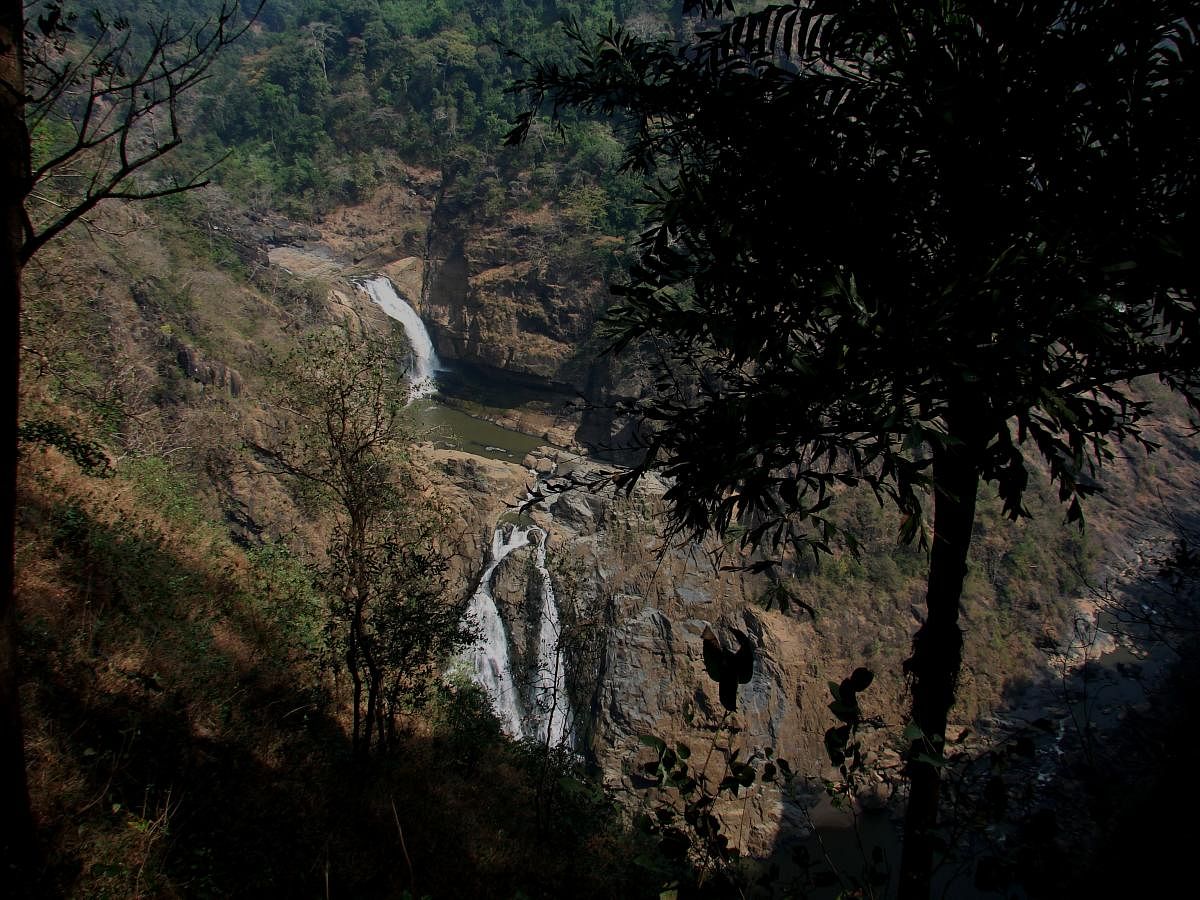
We are on an explorative journey of Sirsi, the enchanting mountain city of Karnataka with picturesque locales, dense forests, abundant waterfalls, trekking trails and ancient temples that show off stunning sculptures and architecture.
Acres of areca and coconut palm trees, banana and other plantations flank the road as we drive towards Sahasralinga, meaning thousand lingas, a little-explored beauty set in verdant surrounds. A wild cacophony of sounds greets us as a busload of school children are on a picnic at the spot. They shriek and yell with excitement as they come upon a gently flowing Shalmala river bathing a thousand stone lingas of various sizes carved on the riverine rocks.
The Shalmala, a tributary of the west-flowing Bedthi or Gangavalli river, is a veritable temple, with the cornucopia of lingas and Nandis dotting its bed. According to legends, the thousand sculpted lingas on the floor of the waterway were carved and installed between 1677 and 1718. They were done so under the orders of Sadashivaraya, ruler of the Vijayanagara kingdom, who was the king of Sirsi. Local legend has it that the childless king believed this would beget him an heir to continue his lineage. Another account attributes the sculpting of the thousand lingas to yet another childless ruler, Arasappa Nayaka, who held sway from 1555 to 1595. He acted upon the advice of the royal priest and was subsequently blessed with children.
It is only in the recent times that this eco-tourist spot with religious flavour, believed to have been discovered in 1969 by the ethnologist Jean Boulbet, is becoming popular with tourists. While the Shalmala river and its banks are a biodiversity treasure trove with a variety of flora and fauna, Sahasralinga is an archetypal enchanting place where we find ourselves to be in harmony with nature.
Temple tour
A hanging bridge across the river connects a couple of neighbouring villages and adds to the natural charm of the environs. We walk its length to drink in the serene splendour of Sahasralinga. Maha Shivaratri witnesses swarms of devotees who throng the place to worship Lord Shiva in his multiple manifestations.
The day becomes a temple tour of sorts as we wind it with a visit to Sirsi’s most famed Marikamba Temple, also known as Doddamma Temple. It is an ancient temple built in 1688, dedicated to Goddess Durga, also known as Renuka and Yellamma in the region. The deity with eight arms, riding the tiger, her mount, is a stately seven-foot tall. According to popular folklore, the idol was discovered in a pond near Hanagal in Hubli. It was subsequently consecrated in the temple here which boasts a large central courtyard surrounded by cloisters which are adorned with the pantheon of Hindu deities. Its walls have striking murals in Kaavi, an art form native to the Konkan region of coastal Karnataka. The art, now extinct, involves creating patterns in red colour against a white background.
We learn some interesting facts associated with the temple which is presided by priests from the Vishwakarma community of carpenters. Furthermore, Kanakadasa, one of Karnataka’s leading poet-saints, philosopher, musician and composer who lived from 1509 to 1609, condemned animal sacrifice which was in vogue at the temple. Gandhiji, who visited Sirsi in 1934, refused to visit the temple for the same reason since male buffaloes were being sacrificed to appease the goddess during the temple’s annual rathyatra. The movement against animal sacrifice subsequently caught momentum and the practice was finally eliminated altogether.
The bi-annual fair Marikamba Jaathre in the month of February when the deity is taken in procession through the town attracts thousands of devotees and is believed to be Karnataka’s biggest fair.
We fall in tune with aqueous symphony the following day, at the Magod Waterfalls. On our way to Magod, we make a brief halt at the huge Kavadikere, to partake of a packed breakfast by the tranquil lakeside. Being its only visitors, we enjoy total and silent communion with ourselves, our surrounds, and the Creator.
Fall wonder
It is discovery at various levels as we stand before Magod Falls, ensconced deep in the forest. It is fed by the Gangavalli river which takes a 198 m leap down, bouncing off rocks as it tumbles in foaming fury. The falls, we learn, dries up during the torrid summer months and turns misty during the monsoon season which lasts till September. Even as we enjoy the sprays from the falls, we spot some youngsters follow trekking trails in the area.
Following the pattern of the previous day, we give our Sirsi trip a spiritual finale by visiting the Sri Vadiraja Mutt at Sodhe, 15 km from Sirsi. The Mutt, set in serene environs, charms us with its lake and tanks, as much as by the architectural and sculptural beauty of the shrines that dot its sprawl, especially around its tanks. The dhwaja sthamba or flagpost in front of the Rama Trivikrama Temple is particularly attractive, with carvings of the swan and Garuda on it.
The heady fragrance of incense blends with flowers in the temples, the earthy smell of damp mud and the bracing scent of foliaceous forests linger on long after we leave mystical Sirsi, and are homeward bound.